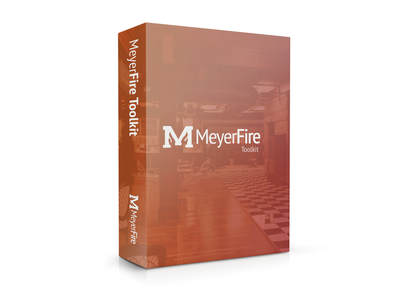|
A business occupancy we're working on has 550 occupants, and requires three means of egress per Section 7.4.1.2 (NFPA 101, 2018 Edition).
Section 7.5.1.1.1 indicates that egress shall be arranged such that each occupant has access to not less than two means of egress. When the three means of egress are required per Section 7.4.1.2, does access to all three means of egress need to be provided to each occupant? Or will providing access for each occupant to a minimum of two means of egress satisfy the code requirement? Sent in anonymously for discussion. Click Title to View | Submit Your Question | Subscribe
7 Comments
Alex
12/16/2022 07:41:22 am
When determining number of exits, there are two main driving factors: occupant load and common path of travel.
Reply
Glenn Berger
12/16/2022 08:12:51 am
In addition to Alex's response, if possible ensure that all egress components are sized for the same number of occupants. By this I mean, do not size 1 exit for 50% of the occupants, 1 exit for 40% of the occupants, and the last exit for 10% of the occupants.
Reply
Jesse
12/16/2022 08:30:22 am
Glenn beat me to the follow-up point on Alex's response. The reason for this of course is that it is expected occupants will evacuate by using the means of egress furthest away from the hazard. Obviously, this applies to just the two means of egress also,
Reply
Todd E Wyatt
12/16/2022 08:52:37 am
Determining the Occupancy Classification(s) (OC) and if the building is protected throughout by an automatic sprinkler system (ASPS) are additional requirements when evaluating the Means of Egress (MOE).
Reply
12/16/2022 05:58:27 pm
In addition to the aboved clarification, We need to satisfied tha code about the number of means of egress to meet the time to evacuate all the occupants of the buiding as 100 person per unit of exit width. Also include in our design the formula in the remoteness of each means of egress.
Reply
Chuck
1/11/2023 03:52:19 pm
Q. When the three means of egress are required per Section 7.4.1.2, does access to all three means of egress need to be provided to each occupant?
Reply
Steven Reilly
3/2/2023 02:26:28 am
So only 2 of the exits need to meet the exit separation requirements of 7.5.1.3, and there is no code requirement for the 3rd exit to meet the same remotness criteria? As a rule of thumb I try to ensure the 3rd exit is more than 45 degrees away at the end of the common path employing the UK regulations
Reply
Leave a Reply. |
ALL-ACCESSSUBSCRIBESubscribe and learn something new each day:
COMMUNITYTop June '24 Contributors
YOUR POSTPE EXAMGet 100 Days of Free Sample Questions right to you!
FILTERS
All
ARCHIVES
July 2024
PE PREP SERIES |
MeyerFire
- Blog
- Forum
-
THE TOOLKIT
- SUBMIT AN IDEA
- BACKFLOW DATABASE*
- CLEAN AGENT ESTIMATOR*
- CLOUD CEILING CALCULATOR
- DOMESTIC DEMAND*
- FIRE FLOW CALCULATOR*
- FIRE PUMP ANALYZER*
- FIRE PUMP DATABASE*
- FRICTION LOSS CALCULATOR
- HANGER SPACER*
- IBC TRANSLATOR*
- K-FACTOR SELECTOR*
- NFPA 13 EDITION TRANSLATOR ('19 ONLY)
- NFPA 13 EDITION TRANSLATOR ('99-'22)*
- LIQUIDS ANALYZER*
- OBSTRUCTION CALCULATOR
- OBSTRUCTIONS AGAINST WALL*
- PITOT CONVERTER
- PLUMBING FIXTURE COUNTS
- QUICK RESPONSE AREA REDUCTION
- REMOTE AREA ANALYZER*
- SPRINKLER DATABASE*
- SPRINKLER FLOW*
- SYSTEM ESTIMATOR*
- TEST & DRAIN CALCULATOR
- THRUST BLOCK CALCULATOR
- TRAPEZE CALCULATOR
- UNIT CONVERTER
- VOLUME & COMPRESSOR CALCULATOR
- WATER STORAGE*
- WATER SUPPLY (US)
- WATER SUPPLY (METRIC)
- UNIVERSITY
- PE Exam
- LOGIN
- PRICING
- OUR CAUSE

MeyerFire.com is a startup community built to help fire protection professionals shine.
Our goal is to improve fire protection practices worldwide. We promote the industry by creating helpful tools and resources, and by bringing together industry professionals to share their expertise.
MeyerFire, LLC is a NICET Recognized Training Provider and International Code Council Preferred Education Provider.
All text, images, and media Copyright © 2016-2024 MeyerFire, LLC
We respect your privacy and personal data. See our Privacy Policy and Terms of Service. The views, opinions, and information found on this site represent solely the author and do not represent the opinions of any other party, nor does the presented material assume responsibility for its use. Fire protection and life safety systems constitute a critical component for public health and safety and you should consult with a licensed professional for proper design and code adherence.
Discussions are solely for the purpose of peer review and the exchange of ideas. All comments are reviewed. Comments which do not contribute, are not relevant, are spam, or are disrespectful in nature may be removed. Information presented and opinions expressed should not be relied upon as a replacement for consulting services. Some (not all) outbound links on this website, such as Amazon links, are affiliate-based where we receive a small commission for orders placed elsewhere.













 RSS Feed
RSS Feed
